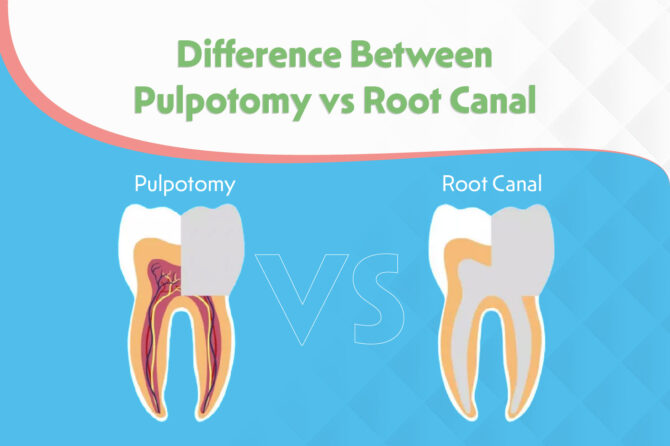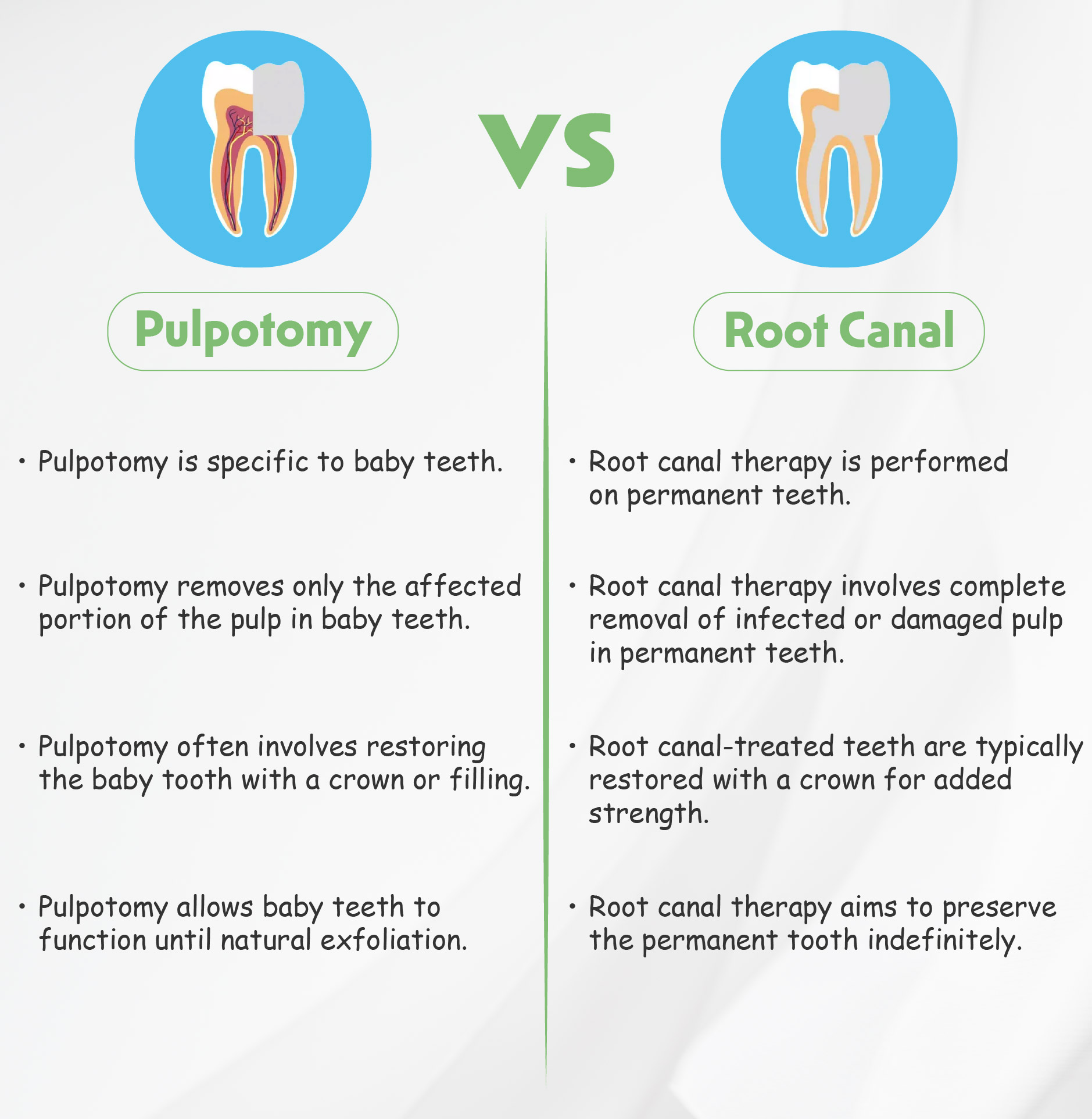
What is the Difference Between Pulpotomy vs Root Canal
Maintaining optimal oral health is crucial for children. When it comes to dental procedures, two terms that often cause confusion are “pulpotomy” and “root canal.” While both are related to treating issues within the tooth, they are distinct procedures with different purposes and outcomes. In this blog, we will delve into the details of pulpotomy and root canal treatments, highlighting their differences and helping you understand when each procedure is necessary.
What is Pulpotomy?
A pulpotomy primarily targets baby teeth, also known as primary or deciduous teeth. These teeth play a vital role in the development of a child’s speech, chewing, and overall oral health. However, when deep cavities or trauma affect a baby tooth, the pulp (nerve and blood vessels) can become compromised. This is where pulpotomy comes into play.
A pulpotomy is a dental procedure that involves the partial removal of the pulp tissue from the crown portion of a tooth. This procedure is typically performed on primary (baby) teeth that have extensive decay or trauma that has affected the pulp. The primary goal of a pulpotomy is to remove the infected or damaged portion of the pulp, while preserving the healthy portion to maintain the vitality of the tooth.
Advantages of Pulpotomy
- Minimally invasive and preserves tooth structure
- Shorter procedure time
- Less discomfort and potential for quicker recovery
- Cost-effective compared to a root canal
- Helps maintain natural tooth and its function
What is Root Canal?
On the other hand, a root canal, also known as endodontic therapy, is a procedure that is performed when the pulp of a tooth is irreversibly damaged or infected. Unlike a pulpotomy, which is limited to the crown portion of the tooth, a root canal involves the complete removal of the pulp from the tooth, including the roots. This procedure is commonly performed on permanent teeth.
During a root canal, the dentist creates an opening in the tooth to access the pulp chamber and root canals. The infected or damaged pulp is then carefully removed, and the canals are cleaned, shaped, and filled with a biocompatible material to seal them off. This prevents further infection and helps to preserve the tooth structure. Similar to a pulpotomy, a crown is often placed over the tooth after a root canal to protect it and restore its function.
Advantages of Root Canal
- Saves teeth that would otherwise be lost
- Prevents further infection and pain
- Allows restoration of the tooth for long-term functionality
- Can save money in the long run compared to tooth extraction and replacement
Pulpotomy vs Root Canal: Key Differences

Tooth Type:
- Pulpotomy is specific to baby teeth.
- Root canal therapy is performed on permanent teeth.
Extent of Treatment:
- Pulpotomy removes only the affected portion of the pulp in baby teeth.
- Root canal therapy involves complete removal of infected or damaged pulp in permanent teeth.
Tooth Restoration:
- Pulpotomy often involves restoring the baby tooth with a crown or filling.
- Root canal-treated teeth are typically restored with a crown for added strength.
Long-Term Implications:
- Pulpotomy allows baby teeth to function until natural exfoliation.
- Root canal therapy aims to preserve the permanent tooth indefinitely.
Conclusion
while both pulpotomy and root canal procedures are aimed at treating issues within the tooth pulp, Understanding the differences between these treatments can help parents make informed decisions about their kids dental care and ensure that they receive the most appropriate treatment for their specific needs. If you have any concerns about the health of your kids teeth, it is always best to consult with a qualified pediatric dentist who can provide personalized recommendations based on your individual circumstances.
Leave a reply